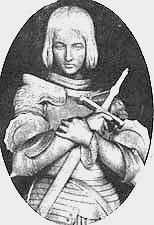Separating Art from the Artist
Today I am wearing four Chanel perfumes -- count them, four -- and I smell WONDERFUL.
On my left hand: Chanel No. 5 (1921 - Ernest Beaux) a perfume worn by my grandmother -- who wafts around me when I bring my nose down to this scent in all its aldehydic glory. Ylang-Ylang, Neroli, Aldehydes/Jasmine, Mayrose/Sandalwood, Vetiver
Left wrist: Coco (1984 - Jacques Polge) Angelica, Mimosa, Frangipani, Mandarin/ Cascarilla, Orange Flower, Bulgarian Rose, Jasmine/ Labdanum, Ambrette Seed, Opopanax/ Benzoin, Tonka, Vanilla
Right hand: Chanel No.19 (1971 - Henri Robert) Galbanum, Bergamot, Neroli, Hyacinth/Rose, Orris, Jasmine, Narcissus, Muguet, Ylang-Ylang / Musk, Sandal, Oakmoss, Leather, Cedarwood
Right wrist: Bois des Iles (1926 - Ernest Beaux) Jasmine, Damask Rose, Ylang-Ylang/Bitter Almond, Gingerbread, Vanilla, /Tonka Bean, Sandalwood, Vetiver
Suffice to say each is wonderful in its own way -- and this concludes the fragrance portion of our program.
Gabrielle "Coco" Chanel is much in the news as an exhibit chronicling her (and Karl Lagerfeld's) work continues at the Metropolitan Museum of Art in New York (through August 7) -- and it is about Chanel that I wish to talk.
An excellent -- exhaustive, really -- review of the exhibit, "Scenes from a Marriage" by Judith Thurman is featured in this week's New Yorker.
In the review, Ms. Thurman presents an unvarnished view of the couturier in which she notes that Chanel nearly singlehandedly is responsible for the "enlightened notion ... that a woman is entitled to dress with the same dignity, comfort and self-possession as a man."
Chanel's "purism" and "yearning for austerity" have forever marked the way women of style now dress, with her less-is-more hallmark of good taste having survived more than 80 years of faddish fashion.
Thurman describes Chanel's coda as "a core of beliefs that were as much about womanhood and its paradoxes as about clothing."
And this paradoxical core is where it gets interesting -- as the writer describes how Chanel's life informed her art:
"However gratefully Chanel might have recalled the gallants who initiated her into the idle and racy life of an apprentice courtesan [The House of Chanel was founded through the generosity of one of her lovers -- and, although she has been much publicized as an uber-independent woman, there seem to be other instances of material support provided as a matter of fair exchange] it came with its own set of humiliations. Perhaps as a result, the little grisette passed among playboy friends refused ever to fetishize another woman -- and that was the moral principle (one of the few) on which Chanel founded her career."
All the beauty, the elegance, the delicacy of her style was shaped on the hardscrabble playing field of high, fast-moving society. Coco came out of rough circumstances (including upbringing in a Catholic orphanage) and apparently quickly learned to broker female wiles into more spendable currency. It is testament to how truly unusual she must have been, to have elevated herself societally to the degree she did.
I love a rags to riches story. I love the idea of this woman overcoming tough circumstances to become a present day icon of beauty and style. I even love the idea of a woman translating sex into power.
What I don't love (quote again from Thurman's New Yorker review):
"the stories of her attempts to wrest control of Chanel Parfums from her partners, the Wertheimer family, by exploiting the Nazi race laws, and of her startling offer to Hitler's secret police chief to broker a negotiated peace with her old friend Winston Churchill ..."
Wily one that she was, even after her arrest post-liberation of Paris, when she was interviewed by the Comite de'Epuration and questioned about her relationship with the German officer who shared her suite at the Ritz during the Occupation, she answered her interrogator with "Really, monsieur, a woman of my age cannot be expected to look at his passport if she has a chance of a lover."
She apparently suffered few repercussions after the war, although it's noted that she moved to Lausanne for a period of time and paid "a large sum" (per her biographer Axel Madsen) to suppress mention of her name in the memoirs of Hitler's former police chief.
It's no surprise that beauty, style, elegance often have sordid bedfellows. Chanel doesn't sound like a nice person. She sounds like a sharp-edged survivor, who did what she felt she had to do and morality was rarely an issue.
But how does, should, that shape the way we look at what she created?
Of course you will answer that for yourself. Deciding whether who she is or what she did requires you to remove yourself from the beauty of her perfumes, her clothes, even her theory of style.
I choose to believe that art transcends the artist and make my choice in favor of the art.
It is an ultimate rationalization. (As I get older, I find I do that more. That, and compassion rears its head more often as I find myself with fewer reasons to be self-righteous.)


2 Comments:
I've read only a little about Ms Chanel. The author of The Art & Science of Scent said mostly derogatory things about her character, but couldn't discount the cleverness of this iconoclastic being. Cathy Newman gave a chapter to her in the above mentioned book. It's must reading for any perfume lover. I got the book at the library and was sorry I had to return it.
~clearing
3:55 PM
I have read so much about Coco Chanel and her work. I must confess, however, to being a not the biggest of her fans because she had strong anti-semetic ties and made many remarks as such.
I do, however, agreee with you, that art transcends the artist, and her amazing colleciton of fragrances, clothing and makeup will live on dispite her.
Four perfumes at once! I am soooooo jealous!
12:25 PM
Post a Comment
<< Home